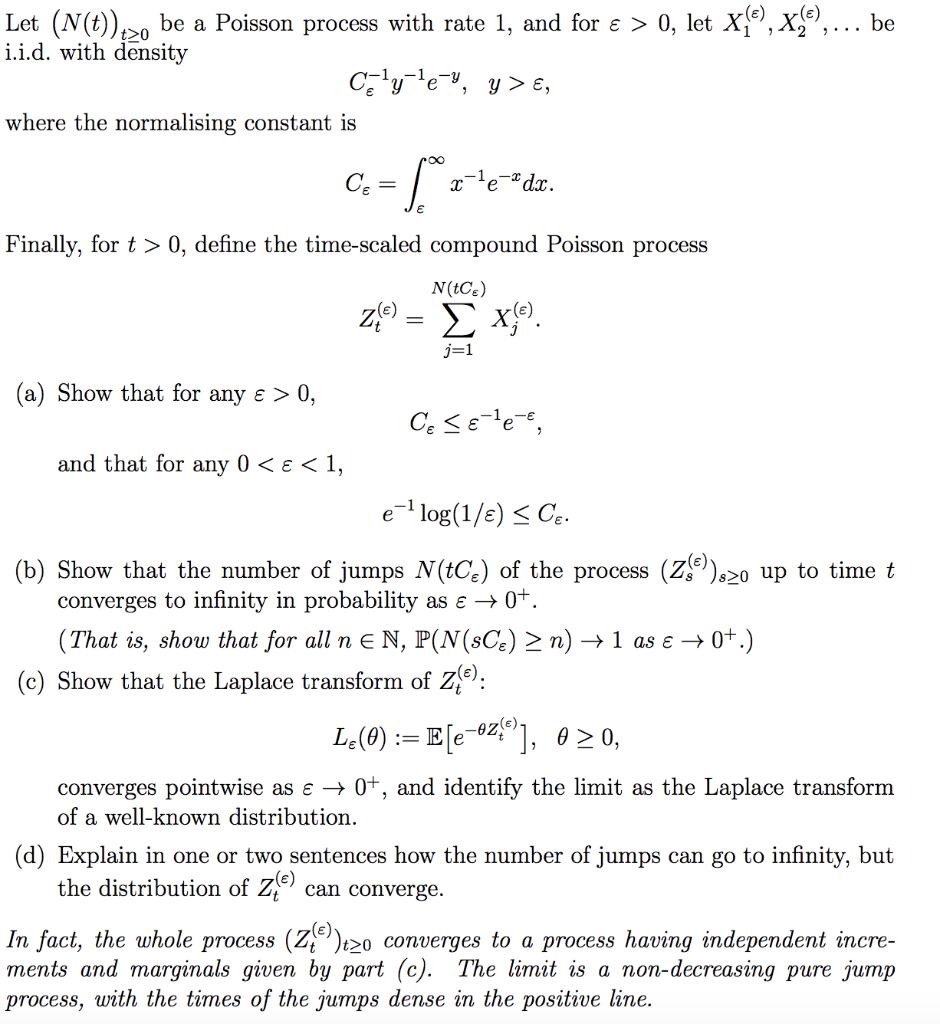Answered step by step
Verified Expert Solution
Question
1 Approved Answer
Let (N(t)),>, be a Poisson process with rate 1, and for e > 0, let X, X,... be i.i.d. with density C'yle-, y >

Let (N(t)),>, be a Poisson process with rate 1, and for e > 0, let X, X,... be i.i.d. with density C'yle-", y > , where the normalising constant is x-le"dx. Finally, for t > 0, define the time-scaled compound Poisson process N(tCe) %3D j=1 (a) Show that for any > 0, C; n) 1 as e 0+.) (c) Show that the Laplace transform of Z): L(0) := E[e=0z;], 0 >0, converges pointwise as e 0+, and identify the limit as the Laplace transform of a well-known distribution. (d) Explain in one or two sentences how the number of jumps can go to infinity, but the distribution of Ze) can converge. In fact, the whole process (Z)t20 converges to a process having independent incre- ments and marginals given by part (c). The limit is a non-decreasing pure jump process, with the times of the jumps dense in the positive line.
Step by Step Solution
★★★★★
3.41 Rating (157 Votes )
There are 3 Steps involved in it
Step: 1
a Let X1 X2 be a sequence of iid random variables with common distribution F For any t 0 define the ...
Get Instant Access to Expert-Tailored Solutions
See step-by-step solutions with expert insights and AI powered tools for academic success
Step: 2

Step: 3

Ace Your Homework with AI
Get the answers you need in no time with our AI-driven, step-by-step assistance
Get Started


